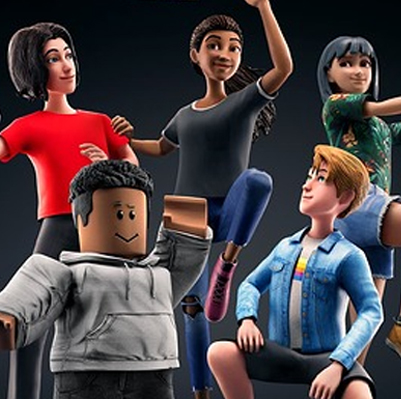Rocket League Mastery: From Diamond to Champion - A Comprehensive Guide to Dominating the Field
I hope the following suggestions will help at least some of you make some changes for the better and get on the road to championships. If you have any questions, check out our website - LOLGA.COM , we provide news and guides for Rocket League players, Rocket League trading is also available here !
build pressure
• Pass cheating
When you lose a challenge to the ball or when you spin back and you see that your teammate will challenge the ball uncontroversially, open wide and give them passing options.
• Passes as last man / does not relinquish possession
Whenever you are the last to come back and challenge the ball with no defense, look to the sides for a pass to a teammate, or to clear the ball to the opposing corner. Hitting the ball directly towards the goal (forcing a shot) usually means giving up possession and often results in passing the ball to the opponent.
defensive rotation
• Wide rotation
Choose wide lines when turning back so you maintain a full view of the court and players and give yourself a favorable angle to receive the ball. This means instead of running backwards towards the ball or towards a teammate, or turning immediately after the ball when it is lost, consider pulling away to pass the ball, or turning from the ball back to the goalkeeper/sweeper position.
• Goal line rotation
When you rotate back to goal, you want to go all of the way back, at least onto the goal line. A lot of players leave a gap between themselves and the goal line which makes them vulnerable to a cross into the middle or high above them while also limiting their vision. If you challenge from the goal, you guarantee that you're covering some of it and that your approach on the ball is providing force away from your side of the field. If you challenge at an angle from a outside of the goal, you're leaving the goal open and hoping to meet the ball at just the right moment. Any hit will also be angled towards the side wall or possibly back into your corner.
Now, in terms of where to position yourself as the goalie defending a cross, I like to look at it in terms of angles and approach. You, as the goalie, are the middle point. The front post is the first point (where the ball is coming from and the closest goal scoring position) and the player receiving the cross is the 3rd point. The 3 points creates an angle that you need to defend, meaning the cone of potential goal scoring positions. Your job is to make that angle as small as possible so as to limit the area you need to worry about. So, if the receiver is positioned in the middle, you want to angle yourself further back to decrease that angle. more towards the far post and also inside of the goal to get a better approach on a high, far post cross. If they're supporting for a near post cross,you can position yourself near post and not worry about the rest of the goal because it's not at risk. As for how to angle your car in these situations, you're in pretty good shape if you're facing half way between each point so that you can react to inside or outside crosses with ease.
• Spider-Man defense
Knowing when to protect the back wall is important. Keeping it as general as possible, you want to keep an eye out for moments where you have a goalie in place and the ball has the potential to launch high above the net. is vulnerable and that's where you want to rotate through the far post and make the decision to drive up the wall and contest. This is a vague description and there are several exceptions, but it's good starting point.
• Challenging dribblers early/disrupting as recovering player
Never give a player room to dribble; it's incredibly dangerous. If you're rotating back and can catch a dribbler, your job is to challenge them (if your teammate isn't). It's the challengers job to disrupt them, so that the defender can easily challenge the result if not already won. If a player is dribbling down the line, there's no immediate threat to the goal. If the player is dribbling down the middle and you are last man, you have to challenge early and be sure to attack the top of the ball.
• Trusting teammate
Double commits are bad. If a teammate is in front of you, let them attack the ball. They make mistakes, but that's part of the game. Have their back. If you have a nice shot on goal and a teammate cuts in to attack it, let them have it. It's not worth the double commit. If a teammate cuts you off in rotation, let it be and cover for them. Be the best teammate you can be.
• Buying time
As the last man, your job is often not to challenge the ball, but to buy time for your teammates to recover. This means slowing down a dribbler by shadowing them if they're in mid field and not close to the goal. This also means not challenging any ball that isn't a certain win. Most importantly, this means staying in the goal when there isn't an immediate threat to it.
To elaborate on the last point, it's all too often that players will cheat out of the net to challenge someone dribbling down the line or into the corner. There's no immediate threat to the goal and your teammates are recovering. Worst case scenario when you stay in goal, they cross the ball and you have to defend it. Best case, you're patient and your teammate rotates in behind you, allowing for you to step in and challenge. Don't be the guy who rushes out for a 50 /50 and leaves the net open. Too many stupid goals are scored this way.
Playing the supportive role
• Playing the probability game
Reading the game is difficult but important. It's about rotation, but it also about positioning, distance, and angles. The way your car is facing matters. So, I suggest playing the probability game.
In any case when you're not the player contesting the ball and are playing the supporting role, you want to be constantly adjusting according to the likeliness of outcomes.
For example, let's say that the ball is in the air and your teammate is contesting it. There are 3 primary scenarios to consider:
1. Your teammate has a clear win. In this scenario, you want to be cheating up either in line with them or slightly ahead, looking to receive the ball, angling your car towards the opposite corner.
2. Your teammate enters a 50/50 with the opponent. When this happens, you want to be cautious and recognize where the ball won't go (directly behind each player). You want to then be positioned a bit more cautiously behind them and facing slightly backwards in a manner that will allow you a quick recovery if need be as well as the ability to quickly turn in and challenge a ball deflected in-field.
3. The opponent is going to win the contest. In this case, you want to be far enough back to be able to receive the hit, likely angled towards your back corner so as to cover a shot on net while also allowing you to step in and challenge a pass or and soft hit.
That may not be the greatest illustration, but I hope you get the idea.
• Not getting sucked in
As the last man, it's easy to get sucked in and let yourself drift out of position, especially when the play lingers in a single location. Be patient and keep your space because getting sucked in often gives the opponent a free goal if the ball deflects over you and you're forced to turn around to recover.
• Staring at the ball/angling the car.
Referring again to angles, you don't want to stare directly at a ball that you're not contesting. If you have no chance of winning a ball, or if you're supporting a teammate with the ball, when the opponent contests it you want to be able to give yourself the freedom to react to wherever it goes. If you're staring straight at it, you're only allowing yourself to challenge a ball hit right to you or one that drops softly, or in the case of supporting your teammate on a 50/50, you're only making yourself available to help out in the case where they win the ball, which kind of defeats the purpose of playing the supporting role. Don't put yourself in a situation where a ball hit in the air or to the sides renders you useless and slow to track back.
To make this situation clearer, imagine the opponent is about to hit the ball from their goal. You're too far away to challenge it but too close to directly intercept a good, high hit. If you stare at the ball and they get that good hit high and on target, it's a goal that you won't be able to save. But if you position yourself more towards the side of the field and angle your car back towards your opposite corner, you are able to comfortably challenge that ball while also allowing yourself to turn in and challenge any softer hit.
• Maintaining pressure and minimizing space/learning to play with partial boost
The ability to pressure as a team is important. If you create too much space and go way out of your way to grab your back boost, you create a gap in your offensive pressure and leave yourself vulnerable to a counterattack with your teammates recovering. Learn how to play with partial boost and prioritize positioning over boost pads. Grab small pads and pay attention to the play. Too often do players panic and rush back to defense when they have 30 boost, their team is pressing with an advantage, and end up Not being there to pressure a ball or hit an easy tap in goal.
Buy Rocket League Items at LOLGA
If you want to know more about Rocket League, check out the website - Lolga.com , in addition to the latest Rocket League news and game guides, Lolga.com also offers a Rocket League trading service, which you can find at Get all cheap Rocket League items here, including the newest Season 9 here, such as Rocket League Points , Blueprints, Rocket Pass Pro Items and other tradable items.
follow us

